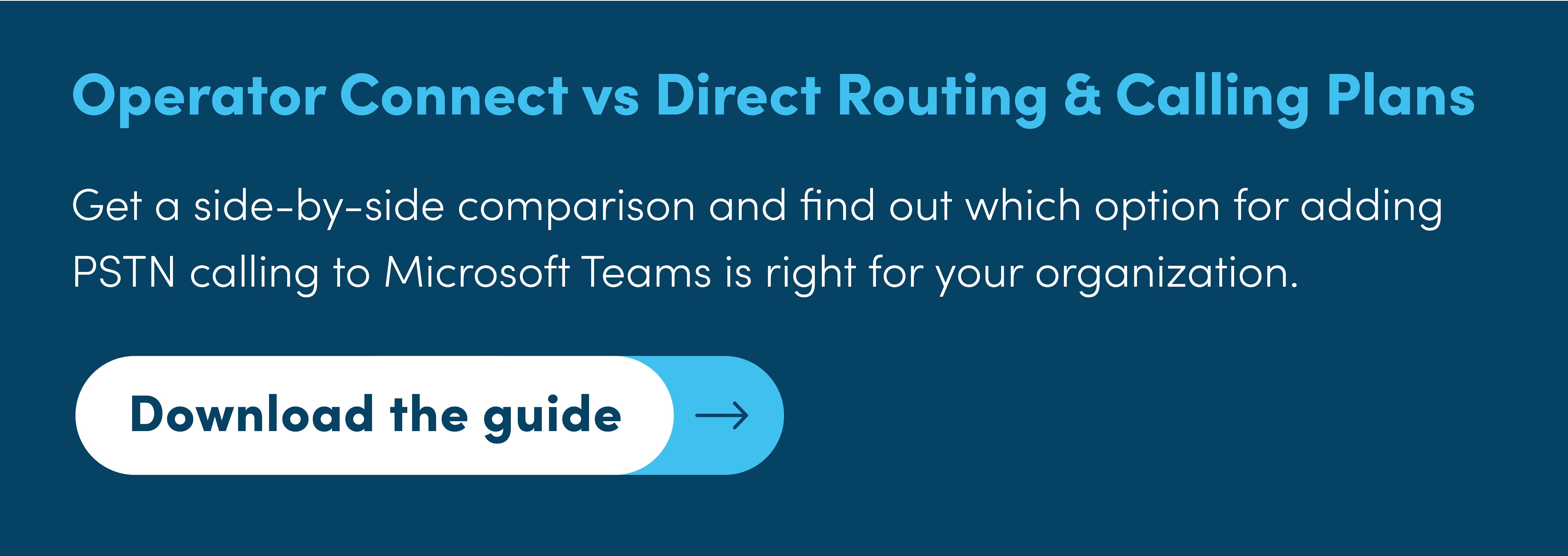Operator Connect, Microsoft’s latest option for adding PSTN calling to Microsoft Teams is already being used in a whole variety of ways, in very different environments. Inevitably, organizations have questions about how it can work together with their other voice systems, and one of the questions we are most frequently asked is whether you can use a mix of Operator Connect and Direct Routing.
The short answer is yes, you can use Operator Connect and Direct Routing, or Operator Connect and Calling Plans, or even all three if you really wanted to. A hybrid environment like that can be a useful workaround for organizations in any number of scenarios.
When might you want to use Operator Connect and Direct Routing?
Let’s say that Organization A requires services in a country not currently available as an option through Operator Connect. They could use Operator Connect where the geographic services are available and then find an alternative solution for those countries not covered, which would likely involve the use of Direct Routing.
At Pure IP for example, we offer PSTN replacement services in over 44 countries through Operator Connect, but we can also provide the option to add on other countries using our SBC Managed Service. This enables customers to connect services from their local carriers to our SBC, giving them a connection to their cloud environment (whether that is Operator Connect or Direct Routing) without investing in additional hardware.
Let’s look at another scenario. In this scenario, Organization B has wide range of telephony requirements in their user base. These could include the integration of other applications such as a Contact Centre, or it could be the integration of analogue or DECT devices, where the customer is unable to, or not ready to migrate away from initially. This quite common in larger multi-site organizations where phased migrations projects are normal. In this scenario, you could once again use a blend of Operator Connect and Direct Routing services, as Direct Routing is still more suitable for supporting these types of integrations.
One last example. Organization C wants to migrate to Teams Voice, and they need to port 10,000 numbers to do so. They like the idea of managing their users through the Teams Admin Center and reducing the level of PowerShell resources they need in-house, but Operator Connect isn’t optimized for assigning users to numbers in bulk, so they would have to use scripts and PowerShell during the initial set up anyway.
They could decide to proceed with a Direct Routing deployment for their existing numbers, to get that extra bit of flexibility, and set up Operator Connect for new users as they come onboard. That way they can manage some of the day-to-day tasks, such as assigning numbers and profiles to new users, through the user-friendly Teams interface, and minimize their reliance on technical staff for those tasks.
Watch: Your top Microsoft Teams questions answered
What are the disadvantages?
One impact of using a hybrid solution like any one of those examples, is that management of your voice services will be split between your providers, which could be a bit of a headache. However, even that can be overcome using solutions that provide visibility over all your numbers, regardless of provider, like Number Connect for example.
Another inconvenience of mixing Direct Routing with Operator Connect can arise if you would like to migrate numbers from Direct Routing to Operator Connect. At this time, migrating numbers cannot be done without a level of service disruption – the number must be deleted from the Direct Routing tenant before it can be added, configured, and assigned in the Operator Connect platform.





